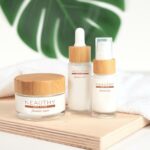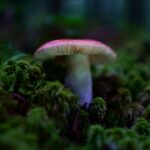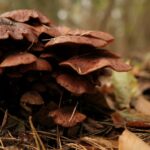Welcome to [Fascinating Overlooked Facts: 10 About Mold], where we delve into the often overlooked world of molds and uncover intriguing details that will leave you fascinated. In this article, we will explore the lesser-known aspects of molds and their fascinating effects on our health. As an experienced writer who has dedicated years to researching and reporting on environmental topics, I am thrilled to share these ten captivating facts about molds. So, grab a cup of tea, sit back, and prepare to be amazed by the hidden wonders of this intriguing fungus.

10 Facts About Mold
Mold, often regarded as a pesky fungi, hides a world of fascinating and overlooked facts. From its impressive diversity to its unexpected effects, mold holds secrets that deserve attention. So, let’s delve into the realm of mold and uncover ten amazing facts that will leave you astounded.
-
A Multitude of Species – Mold, with its indomitable presence, boasts over 10,000 species scattered across our planet. From the fuzzy green patches on bread to the mysterious black spots in damp corners, mold takes countless forms, each with its own unique characteristics.
-
Mold’s Rainbow Palette – Imagine an artist’s palette, filled not with shades of paint, but with vibrant hues of mold. This resilient fungi can display colors ranging from a striking orange to a hauntingly beautiful purple. It’s a living artwork that thrives on decaying materials, embellishing them in vivid pigments.
-
Nature’s Decomposers – Mold is nature’s invisible army, tirelessly working to break down organic matter. It dines on fallen leaves, decaying wood, and even deceased animals, turning them into rich, fertile soil. Without mold’s remarkable ability to decompose, our ecosystems would become stagnant, overrun with lifeless remnants.
-
Mold as a Historical Weapon? – While it may sound like the stuff of movies, mold’s potential in warfare is a little-known fact. Throughout history, cunning minds have harnessed mold’s destructive capabilities. From strategically placing moldy straw in wells to contaminate enemy water supplies, to employing toxic molds to cause sickness among foes, this humble organism has played a surprising role in human conflicts.
-
Unwelcome Guests – For those suffering from asthma, mold can aggravate respiratory symptoms and lead to severe complications. Additionally, mold’s presence has been linked to depression and other psychological effects. Our battle against this microscopic invader extends beyond physical health, reminding us of the complex relationship between our environment and our well-being.
-
An Expansive Kingdom – With over 100,000 species known to science, mold remains an expansive and intricate kingdom waiting to be explored. Its vast diversity encompasses molds that thrive in diverse habitats ranging from humid bathrooms to the dry deserts, revealing a tenaciousness that defies conventional limits.
-
Bleach: Not the Answer – Mold-infested surfaces may seem to beg for a good scrubbing with bleach, but this popular remedy might do more harm than good. Bleach can only eliminate surface mold, leaving invisible spores behind. These resilient spores can easily regenerate, wreaking havoc once again. Proper mold remediation methods involve identifying and addressing the source of moisture, followed by thorough cleaning and drying.
-
A Surprising Link – Mold has been implicated in pregnancy complications, with studies suggesting a connection between mold exposure and miscarriages. While more research is needed to fully understand this link, it serves as a poignant reminder of the importance of safeguarding our living spaces from mold’s insidious presence.
-
Vitamin D’s Shield – If you suffer from mold allergies, boosting your intake of vitamin D might offer some relief. This essential vitamin, known for its role in bone health, has also been found to enhance our immune system’s response to mold allergens. Consider incorporating vitamin D-rich foods or supplements into your diet to help combat those pesky mold allergies.
-
Ever-Present but Often Unseen – Mold is an omnipresent force, existing in every nook and cranny of our world. Its microscopic spores drift in the air we breathe, unseen to the naked eye. While we may not always perceive its presence, it pays to be aware of its potential impact on our health and surroundings, so that we can take proactive measures to keep it in check.
In this kingdom of mold, where an invisible army feasts on decay and mesmerizing colors bloom, we find a lesser-known side of nature that invites our curiosity. By embracing these ten overlooked facts about mold, we can cultivate a greater understanding of the intricate web of life that surrounds us.
Mold, with its astonishing diversity and unsuspected connections, enthralls us with its vibrant palette and crucial role in decomposition. Yet, it also carries potential dangers and captivating historical intrigue. So, let’s peer into this intricate world and unveil the fascinating secrets that mold hides in plain sight.
In the article “10 facts about mold,” we dive deep into the fascinating world of mold. Have you ever wondered what does mold smell like? Curious to know how to test for mold or how to remove mold from your living space? Perhaps you’re seeking effective ways to get rid of mold in your shower. Or maybe you’re pondering how long it actually takes for mold to grow. Whatever questions you have about mold, we have the answers for you. Click here to find out what mold smells like: (what does mold smell like). Discover the best methods to test for mold here: (how to test for mold). Looking for step-by-step instructions on how to remove mold? Look no further: (how to remove mold). If you’re dealing specifically with mold in your shower, check out this informative guide: (how to get rid of mold in shower). Finally, learn all about the timeline for mold growth and how to prevent it: (how long does it take for mold to grow). Explore our comprehensive article and become an expert in all things mold-related.
Health Effects of Mold
Exposure to mold can have significant health effects that are often overlooked. From respiratory damage to allergic reactions, mold can have a profound impact on our well-being. In this article, we will explore ten fascinating facts about the health effects of mold that will help you understand the importance of addressing this issue. Let’s dive in!
1. Mold and Respiratory Issues
Mold can trigger a range of respiratory issues, including coughing, wheezing, and shortness of breath. When mold spores are inhaled, they can irritate the airways and cause breathing difficulties. Individuals with asthma or allergies are particularly vulnerable to these effects. So, it’s crucial to be mindful of mold in your environment to protect your respiratory health.
Quote: “Breathing in mold spores can lead to coughing, wheezing, and shortness of breath, especially for those with asthma or allergies.”
2. Allergic Reactions
Many people experience allergic reactions due to mold exposure. These can include red or itchy eyes, a stuffy or runny nose, and skin rashes. Mold spores act as allergens, triggering the body’s immune response and leading to these uncomfortable symptoms. Understanding this connection can help you identify the cause of your allergies and take appropriate steps to minimize exposure.
Quote: “Mold spores act as allergens, causing symptoms like red or itchy eyes, a stuffy nose, and skin rashes.”
3. Impact on Quality of Life
Living in a mold-infested environment can significantly reduce your quality of life. The constant presence of mold and its associated health effects can lead to chronic fatigue, difficulty concentrating, and overall discomfort. Mold can also contribute to mental health issues such as anxiety and depression. It’s important to prioritize a mold-free environment to maintain a high quality of life.
Quote: “Living in a mold-infested environment can result in chronic fatigue, difficulty concentrating, and overall discomfort, affecting both physical and mental well-being.”
4. Increased Risk for Infections
In some cases, mold exposure can lead to respiratory infections, particularly in individuals with weakened immune systems or pre-existing lung conditions. Mold spores can settle in the lungs and create an environment conducive to bacterial or fungal growth. This highlights why it’s essential to minimize mold exposure, especially for vulnerable individuals.
Quote: “Exposure to mold can increase the risk of respiratory infections, especially for individuals with weakened immune systems or existing lung conditions.”
5. Eye, Nose, Throat, and Skin Inflammation
Mold can cause inflammation in various parts of the body, including the eyes, nose, throat, and skin. It may result in symptoms such as redness, irritation, and discomfort. These inflammatory reactions are the body’s way of responding to mold exposure and should not be overlooked. Taking steps to reduce mold in your surroundings can help alleviate these issues.
Quote: “Mold exposure can lead to inflammation in the eyes, nose, throat, and skin, causing redness and discomfort.”
6. Mold and Asthma
For individuals with asthma, mold can be a significant trigger for asthma attacks. The presence of mold spores in the air can irritate the airways and lead to asthma symptoms such as coughing, wheezing, and difficulty breathing. Managing mold in your environment is crucial for maintaining good asthma control and reducing the risk of exacerbations.
Quote: “Mold is a common trigger for asthma attacks, causing symptoms like coughing, wheezing, and breathing difficulties.”
7. Health Effects Beyond the Respiratory System
While mold’s impact on the respiratory system is well-known, it can also affect other organs. Prolonged exposure to mold has been associated with damage to the kidneys and liver. These organs play vital roles in our overall health, so protecting them from the potential harm of mold should be a priority.
Quote: “Prolonged exposure to mold can negatively affect organs such as the kidneys and liver, underscoring the importance of preventing mold growth in your environment.”
8. The Connection Between Mold and Pregnancy
Pregnant women should be particularly cautious about mold exposure, as it has been linked to pregnancy complications. Research suggests that exposure to mold during pregnancy can increase the risk of preterm birth, low birth weight, and developmental issues in the child. Taking steps to identify and remove mold in and around your home can contribute to a safer and healthier pregnancy.
Quote: “Exposure to mold during pregnancy has been associated with risks such as preterm birth, low birth weight, and developmental issues in the child.”
9. Testing for Mold
Homeowners concerned about mold can benefit from professional mold testing. Testing can help identify the presence of mold and determine its specific species. This information can guide remediation efforts and ensure that the right measures are taken to address the particular mold issue effectively.
Quote: “Professional mold testing can provide valuable insights into the presence and species of mold, enabling targeted remediation strategies.”
10. Reliable Sources for Mold Information
When seeking information about mold and its health effects, it’s crucial to rely on trusted sources. The Centers for Disease Control and Prevention (cdc.gov), Mayo Clinic (mayoclinic.org), and the U.S. Environmental Protection Agency (epa.gov) are reliable sources that offer comprehensive and up-to-date guidance on mold-related topics.
Quote: “For reliable information on mold and its health effects, consult trusted sources such as the Centers for Disease Control and Prevention, Mayo Clinic, and the U.S. Environmental Protection Agency.”
In conclusion, the health effects of mold are far-reaching and can have a significant impact on our well-being. From respiratory issues to allergic reactions and beyond, it’s vital to understand and address mold-related concerns. By being proactive in reducing exposure and seeking professional guidance, we can safeguard our health and create a mold-free environment. So, take the necessary steps to protect yourself and your loved ones from the potential hazards of mold.
Quote: “Understanding and addressing mold-related health effects is crucial for maintaining overall well-being. By reducing exposure and seeking professional guidance, we can create a safe and mold-free environment for ourselves and our loved ones.”
Effects Of Mold
Mold is a common presence that can have a range of effects on our health and surroundings. From causing allergies to respiratory issues, understanding the effects of mold is crucial for maintaining a safe and healthy environment. Let’s delve into some fascinating yet often overlooked facts about mold and its impact on our lives.
1. Mold Can Trigger Allergic Reactions for Both Allergic and Non-Allergic Individuals
Mold exposure can lead to a variety of allergic reactions, such as sneezing, coughing, and itchy eyes. But did you know that even individuals without allergies can be affected? Mold can irritate the eyes, skin, nose, throat, and lungs for anyone exposed to it, regardless of their allergy status. So, it’s essential to be mindful of mold’s presence and take necessary precautions. As the saying goes, “Prevention is better than cure.”
Quote: “Mold exposure can cause allergic reactions and respiratory complaints, even in individuals without mold allergies.”
2. Mold Can Aggravate Asthma and Trigger Asthma Attacks
For people with asthma, mold can pose a significant threat. Mold spores in the air can act as triggers, leading to asthma symptoms such as wheezing, coughing, and shortness of breath. Breathing in mold spores can cause a sudden and severe asthma attack, highlighting the importance of controlling mold growth in indoor environments to protect those with asthma. Don’t let mold become the invisible enemy that hinders your respiratory health.
Quote: “Mold can aggravate asthma symptoms and trigger asthma attacks in individuals with asthma who are allergic to mold.”
3. Mold Exposure Can Have Psychological Effects
While we often focus on the physical health implications of mold exposure, its impact on mental well-being should not be overlooked. Living in a mold-infested environment can result in chronic fatigue, difficulty concentrating, and overall discomfort. Mold can affect our ability to relax and feel at ease in our own space. So, addressing mold issues not only improves physical health but also contributes to a healthier state of mind.
Quote: “Living in a mold-infested environment can result in chronic fatigue, difficulty concentrating, and overall discomfort, affecting both physical and mental well-being.”
4. Mold Can Cause Various Respiratory Issues
Mold exposure can lead to a range of respiratory issues, extending beyond just asthma. It can cause symptoms such as a stuffy nose, wheezing, and shortness of breath. Whether you have allergies or not, mold in your surroundings can wreak havoc on your respiratory system. So, it’s crucial to be aware of the potential risks and take action to prevent or eliminate mold growth in your indoor spaces. A little prevention goes a long way in keeping your lungs healthy.
Quote: “Mold exposure can cause respiratory issues such as coughing, wheezing, and shortness of breath, especially for those with asthma or allergies.”
5. Prolonged Mold Exposure Can Impact Multiple Organs
While we often think of mold affecting our respiratory system, its impact can extend to other organs as well. Prolonged exposure to mold has been associated with adverse effects on organs such as the kidneys and liver. These vital organs play crucial roles in our overall health, so taking steps to prevent, identify, and eliminate mold is essential for safeguarding our well-being from the inside out.
Quote: “Prolonged exposure to mold can negatively affect organs such as the kidneys and liver.”
6. Mold Exposure during Pregnancy can Pose Risks
Pregnant individuals should be aware of the potential risks of mold exposure. Studies have indicated that exposure to mold during pregnancy can increase the risk of complications such as preterm birth, low birth weight, and developmental issues in the child. It’s vital for expectant mothers to prioritize a mold-free environment to ensure the best possible outcomes for both the mother and the baby.
Quote: “Exposure to mold during pregnancy has been associated with risks such as preterm birth, low birth weight, and developmental issues in the child.”
7. Trusted Sources Offer Reliable Information on Mold and its Health Effects
When it comes to understanding mold and its effects, it’s crucial to rely on trusted sources for accurate information. Organizations like the Centers for Disease Control and Prevention (CDC), Mayo Clinic, and U.S. Environmental Protection Agency (EPA) provide reliable guidance on mold, its health effects, and effective remediation strategies. Relying on these reputable sources ensures that you have access to up-to-date and evidence-based information to make informed decisions regarding mold prevention and remediation.
Quote: “Trusted sources such as the Centers for Disease Control and Prevention, Mayo Clinic, and U.S. Environmental Protection Agency provide reliable information on mold and its health effects.”
8. Taking Action Against Mold is Essential for a Healthy Environment
Whether it’s your home, workplace, or school, taking action against mold is crucial for maintaining a healthy environment. Mold can thrive in damp and humid conditions, so controlling moisture is key to preventing its growth. Additionally, if mold is already present, it’s important to clean it up and eliminate sources of moisture to prevent further growth. Remember, addressing mold issues promptly not only protects your health but also ensures a safe and comfortable space for everyone.
Quote: “The key to controlling indoor mold growth is controlling moisture. If mold is present in your home or school, it is important to clean it up and eliminate sources of moisture.”
9. Seek Professional Help and Resources when Needed
If you suspect or believe that you are experiencing health issues due to mold exposure, it’s essential to consult a healthcare provider. They can evaluate your symptoms and recommend appropriate actions or treatments. Additionally, if your property owner or landlord is unresponsive to your concerns about mold, there are resources available to help you address the situation. Don’t hesitate to seek professional assistance for a thorough evaluation and effective remediation strategies.
Quote: “If you believe you are ill due to mold exposure, consult a healthcare provider to determine the best course of action. If your property owner or landlord is unresponsive to mold concerns, there are resources available for help.”
In conclusion, mold has various effects on our health and environment. From triggering allergies to exacerbating asthma and impacting multiple organs, understanding these effects is crucial for maintaining a safe and healthy living or working space. By being aware of the risks, taking preventive measures, and seeking professional help when needed, we can create a mold-free environment that contributes to our overall well-being.
Table: Common Effects of Mold Exposure
| Effects | Description |
|---|---|
| Allergic reactions | Mold exposure can cause allergic reactions, including sneezing, coughing, and itchy eyes. |
| Aggravation of asthma and asthma attacks | Mold can trigger asthma symptoms and potentially lead to severe asthma attacks. |
| Psychological impact | Living in a mold-infested environment can result in chronic fatigue, difficulty concentrating, and discomfort. |
| Respiratory issues | Mold exposure can cause respiratory issues such as a stuffy nose, wheezing, and shortness of breath. |
| Impact on multiple organs | Prolonged mold exposure can negatively affect organs like the kidneys and liver. |
| Risks during pregnancy | Mold exposure during pregnancy increases the risk of complications, including preterm birth and low birth weight. |
Remember, prevention and proactive measures are key in combatting mold and ensuring a healthier living environment.
The Impact of Mold on Health and Environments
[youtube v=”sjVSmFpvVKA”]
What You Should Know About Mold
Mold is a fascinating organism that has both beneficial and harmful aspects. With over 100,000 species, molds come in various colors and play a vital role in decomposing organic matter, enriching soil, and even producing life-saving antibiotics like penicillin. However, when mold finds its way into our living spaces and grows uncontrollably, it can have severe consequences on our health and well-being.
The Dark Side of Mold
Mold thrives in damp, warm, and humid conditions, making our homes an ideal breeding ground. It reproduces rapidly through tiny seed-like pods called spores, which can cause adverse reactions if inhaled in large quantities. Prolonged exposure to mold can lead to respiratory issues, such as asthma, breathing difficulties, and chronic fatigue. It can also trigger allergic reactions, including red or itchy eyes, stuffy noses, and skin rashes.
The Dangers Lurking in Your Home
Mold only requires a bit of moisture and some nutrients to grow, and it can find these in various household materials, such as wallpaper or even dust. A leaky roof or a flood can provide the necessary moisture, allowing mold to establish massive colonies that spread further throughout your living space. Removing all mold is challenging, but it can be controlled by keeping your house as dry as possible and safely removing any visible mold with appropriate cleaning products.
“Prolonged exposure to great volumes of mold can increase your chances of developing adverse reactions, including headaches, respiratory issues, eye and skin irritation.”
Protecting Your Health and Environment
It is crucial to understand the potential risks associated with mold exposure and take proactive measures to prevent its growth. If you suspect mold in your living environment, seek professional help to identify the species and guide effective remediation strategies. Trusted sources such as the Centers for Disease Control and Prevention, Mayo Clinic, and U.S. Environmental Protection Agency provide reliable information on mold and its health effects.
“Controlling moisture is key to preventing mold growth, and prompt action should be taken to clean up existing mold and eliminate sources of moisture.”
By maintaining a clean and dry living space, you can minimize the risks mold poses to your health. Remember, prevention is always better than dealing with the consequences of a mold-infested environment.
“Prevention and proactive measures are crucial in maintaining a mold-free and healthy environment.”
Seeking Help When Needed
If you experience any symptoms associated with mold exposure or have concerns about mold in your living space, don’t hesitate to consult a healthcare provider. Addressing mold issues promptly with property owners or landlords can also safeguard your well-being and the environment you live in.
In conclusion, while mold has played a significant role throughout history and continues to offer benefits, an excess presence in our homes can have detrimental effects. Being aware of the potential risks, taking preventive measures, and seeking professional assistance when needed can help ensure a mold-free and healthy living environment.
“By maintaining a clean and dry living space, you can minimize the risks mold poses to your health. Prevention is always better than dealing with the consequences of a mold-infested environment.”

FAQ
Question 1: How many species of mold are there?
Answer: There are over 10,000 species of mold.
Question 2: Can mold grow on anything?
Answer: Mold is versatile and can grow on almost anything.
Question 3: What is the role of mold in nature?
Answer: Mold has a vital role in helping organic matter decompose.
Question 4: Has mold been used in warfare?
Answer: Mold has been suspected to have been used in warfare.
Question 5: Can mold exposure worsen asthma and cause depression?
Answer: Mold exposure is linked to worsened asthma symptoms and is also associated with depression.
- Unveiling the Enigma: Mansoureh Khojasteh Bagherzadeh’s Public Appearances & Private Life in Iran - July 18, 2025
- Unveiling the Mystery: Mansoureh Khojasteh Bagherzadeh’s Husband: A Rare Glimpse into a Private Life - July 18, 2025
- Unveiling Masoud Khamenei’s Mother: Power, Influence, and Iran’s Future - July 18, 2025
















